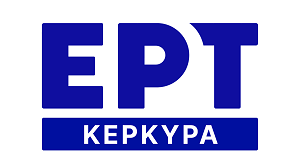Gamification has been increasingly acknowledged for its potential in engaging individuals in behavioral and cognitive changes. Despite its growing recognition, the application of gamification in environmental education, particularly within inmate populations, remains relatively unexplored. In this study, we aim to address this gap by introducing a gamified approach to environmental education for inmates, focusing on municipal organic waste management through composting and its subsequent use as a soil amendment for vegetable growth.
The project was conducted over four school semesters, with inmates divided into two groups of 10 participants each. Both groups were responsible for collecting, sorting, and managing the composting process for their daily produced solid organic waste. Participants also decided on the vegetable species to be grown using the produced compost and engaged in the cultivation process. The group with lower efficiency in composting and vegetable production would prepare a meal using the vegetables produced by the other group. Roles and responsibilities were assigned to participants throughout the project. Below a breakdown is provided explaining how the gamified process functions within the context of this study:
1. Project setup: The inmates were divided into two groups of 10 participants each. The overall objective of the project was to manage municipal organic waste through composting and use the resulting compost as a soil amendment for vegetable growth.
2. Competition and collaboration: The two groups were responsible for collecting, sorting the daily produced solid wastes and managing the parameters for the efficient composting. The competitive aspect is introduced by comparing the efficiency of each group's composting process and vegetable production. The group with lower efficiency would prepare a meal using the vegetables produced by the other group, fostering a sense of friendly rivalry and motivation to perform better.
3. Decision-making and autonomy: Participants were given the autonomy to decide on the vegetable species they wanted to grow using the produced compost, and they were engagef in the cultivation process. This element of choice empowered them to take ownership of their learning and reinforced their understanding of how their decisions impact the environment.
4. Role assignment: Throughout the project, roles and responsibilities were assigned to participants, simulating real-world scenarios and encouraging them to work together as a team to achieve their common goals.
5. Feedback and assessment: The effectiveness of the project in promoting sustainable practices and the degree of ludification as a driving force for involvement were assessed via questionnaires. This feedback mechanism helped gauging the success of the gamified process and provided valuable insights for future improvements.
Overall, the gamified process functions by blending competition, collaboration, decision-making, role assignment, and feedback mechanisms to create a dynamic and engaging learning experience. This approach encourages inmates to actively participate in the program, develop critical thinking skills, and better understand the importance of sustainable practices and their impact on the environment. In addition, the effectiveness of the project in promoting sustainable practices and the degree of ludification as a driving force for involvement were assessed via questionnaires. The gamified composting process provided inmates with hands-on experience in understanding the importance of sustainable practices and their decision-making impact on the environment. Moreover, the game encouraged critical thinking and collaboration among inmates, fostering collective learning and teamwork towards a shared goal.
This research demonstrates the potential of gamified environmental education for inmates as an engaging and participatory approach that can facilitate the development of necessary skills and attitudes for social reintegration, as well as contribute to raising awareness on environmental issues and promoting sustainable practices.
Back














